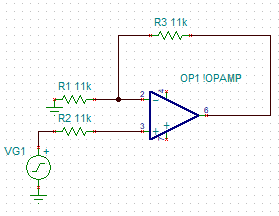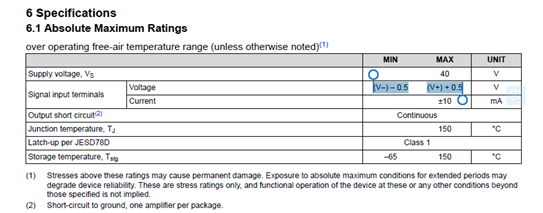Hi expert,
I have a question about OPA4171 application; what is the impact when IN+ exceeds the power supply? How should the input current be evaluated?
When IN+ exceeds the power supply voltage of 5V, the op amp will clamp the IN+ voltage at 5.5V. How to ensure that the op amp will not exceed the SPEC of the maximum input current?
Looking forward to your reply, thanks..





